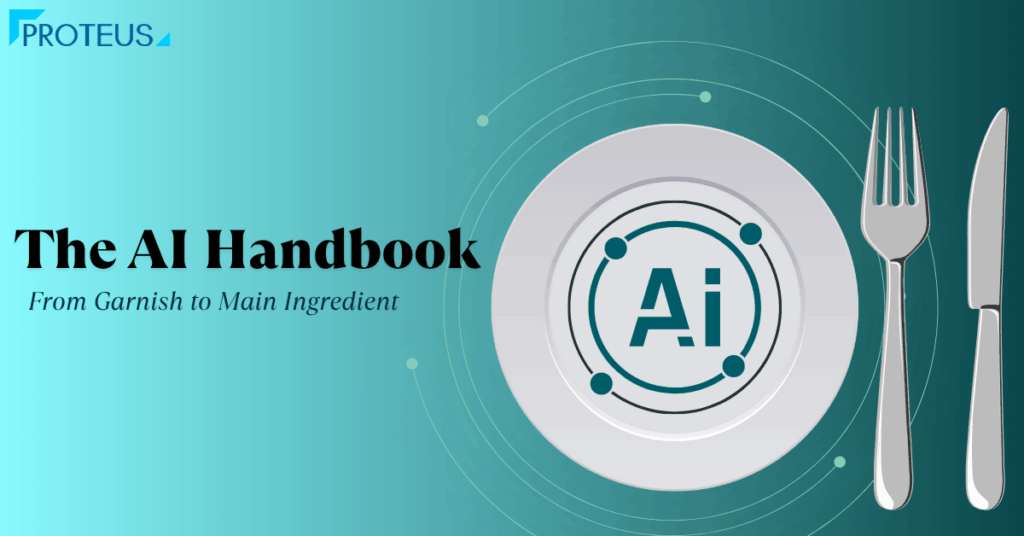
My wife recently observed that AI has become the new dhaniya (coriander). “You just sprinkle a little on top of everything,” she said.
She’s not wrong. In the race to be modern, countless software products are being “garnished” with AI. It’s a sprinkle here, a dash there, often making the product look trendy without fundamentally changing its taste or adding real value. It’s the illusion of innovation, not the substance of it.
But real, transformative AI isn’t a garnish. It’s a core ingredient that, when used correctly, can change the entire recipe of your business.So, how do you move from sprinkling to cooking? And who should be in the kitchen?
The first question that stumps most organizations is: who drives the AI strategy? Is it an IT project, or a business initiative? If you’re waiting for your IT department to hand you a list of AI solutions, you’re looking in the wrong direction. While IT is a crucial partner for implementation, the real breakthroughs happen when the business leads the charge.
Why? Because you know the business. You know the bottlenecks, the frustrations, the repetitive tasks that drain your team’s energy, and the data-driven decisions you wish you could make.
Our experience is unequivocal: 100% of our most successful AI projects were identified, defined, and driven by business teams. They didn’t start with technology; they started with a problem.
And if you’re unsure where to start beyond the obvious chatbots, you’re not alone. While over 60% of executives call AI a top priority, only about a third have a clear roadmap. This handbook is your starting point.
Before you even whisper the letters “A” and “I,” identify a genuine business problem. Don’t look for a use case for AI; look for a pain point in your operations. Start by asking simple questions: Where are we slow? Where are we making mistakes? Where are we wasting our experts’ time?
Action: Pick one specific, nagging problem. Choose one that is manageable but whose solution would deliver a real, visible benefit. A small, early win is the best fuel for a larger transformation.
There is no one-size-fits-all AI product you can buy off the shelf. Your business has unique processes, data, and rules. AI needs to be tailored to you. The best way to do this is with a focused Proof of Concept (POC).
Action: Scope a small-scale pilot. Define exactly what success looks like. For example: “In the next 60 days, we want an AI tool to review 1,000 customer support tickets and correctly categorize 80% of them into five predefined types.” This is clear, measurable, and realistic.
This is the most important concept to grasp: AI has to be trained.
Think of it as a new employee. On day one, they know nothing about your business. You have to teach them. You give them your manuals, show them past examples, and correct their mistakes. The better your training, the better they perform.
AI is the same. It learns from your data and your feedback. If you provide it with clear, high-quality examples of what “good” looks like, it will learn to replicate it.
Your new hire won’t be your top performer on day one. Neither will your AI. It will not be 100% accurate initially. It might start at 70% or 80%.
The key is to track its performance trajectory. With more data and more feedback, that accuracy will climb. The goal isn’t perfection; it’s continuous improvement and achieving a level of performance that provides a massive return on investment, freeing up your human team for more valuable work.
Ready to find your first problem to solve? Use these questions as a guide. Discuss them with your teams to pinpoint where AI can be a core ingredient, not just a garnish.
(For tackling repetitive, manual work)
(For enhancing decision-making)
(For improving customer experience)
(For better forecasting and prediction)
(For understanding documents, images, and text)
AI is powerful, but it’s just a tool. The secret ingredient isn’t the algorithm, it’s you. It’s your business knowledge, your understanding of the process, and your clarity on the problem you want to solve.
Stop looking for AI solutions and start identifying your most pressing business challenges. When you lead with the problem, you’ll find that AI isn’t a confusing, technical garnish. It’s one of the most powerful ingredients you can add to your business.
Ready to start cooking?
Consult us to craft the perfect solution tailored to your business needs: https://www.proteustech.in/ai-consulting/
Download